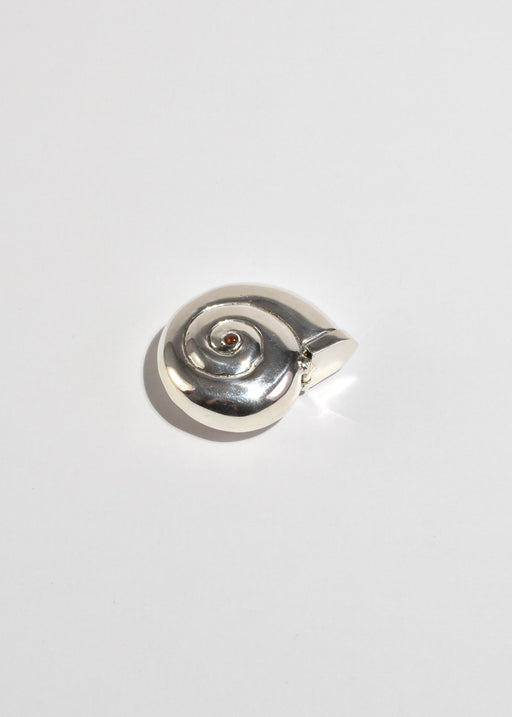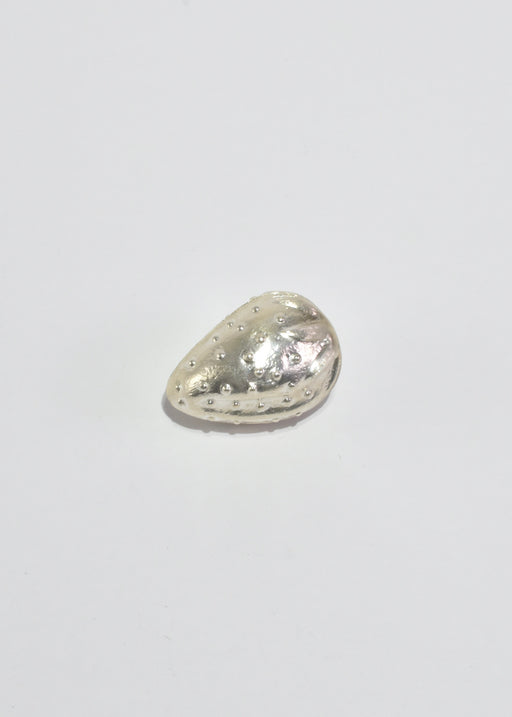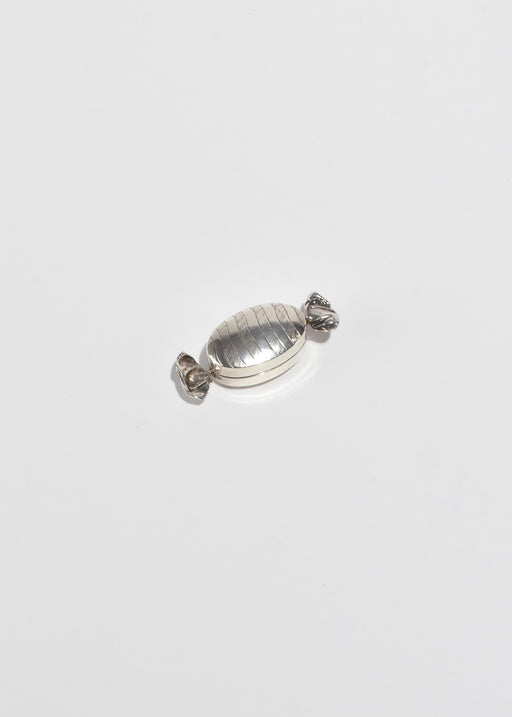
Object of Interest: The Pill Box
Sometimes the most ornate stories arrive in highly petite packages: the pillbox's evolution from practical container to social signifier is a master class in transforming daily necessity into art form.
November 23, 2024

Ancient Roman pill case

Ancient Roman pill case

Ancient Roman pill case

Pyxis via Harvard Art Museum

Japanese medicine case, Ido period, via the Freer Gallery of Art
Ancient Egyptians recorded the first references to pills: pea-sized combinations of medicinal ingredients, bread dough, honey, and/or grease. In ancient Greece, these early medicines were called katapotia—"something to be swallowed"—while Roman scholar Pliny coined the term pilula, i.e. "pill." Their storage forms remained purely utilitarian: alabaster and ceramic vessels found in Egyptian tombs, while discoveries of small cylindrical wooden "pyxis" boxes at Pompeii reveal how Greeks and Romans once stashed their remedies.

Snuffbox, P.M.C., ca. 1770

Snuffbox with Ulysses discovering Achilles and harbor scenes, ca. 1780
It wasn't until centuries later—in the drawing rooms of Victorian England—that these humble containers evolved into objects worthy of embellishment. It’s worth noting the timing: in 1872, the rotary tablet press ushered in an era of mass-produced medicines and pharmaceutical revolution.
By then, Victorians were already well-versed in the art of the precious personal container. Carrying snuff had become a symbol of social cache, establishing a precedent for exquisitely crafted small boxes that slipped discreetly into coat pockets and evening bags. In high society, the wealthy commissioned custom snuff boxes cast in gold and silver, often adorned with precious stones, portrait miniatures, or classical hand-painted vignettes, while more accessible versions emerged in tortoise-shell and mother-of-pearl.

Snuffbox with scene of harvesting fruit, Johann Wilhelm Keibel, ca. 1820

Archival silver from The Victoria and Albert Museum collection

Archival silver from The Victoria and Albert Museum collection

Archival silver from The Victoria and Albert Museum collection

Early paper pill boxes, Wellcome Library, London
In the early 20th century, pharmacists dispensed prescriptions in simple paper boxes—clearly this wouldn’t do for pill-popping Victorians, so the established traditions of fine metalwork were a natural extension for pill storage. Sterling silver emerged as a particularly favored material, its natural antimicrobial properties offering both practical benefit and collectible appeal.
Some of the most coveted examples came from York House in London's Battersea district, whose exquisite enameled boxes produced between 1753-1756 were so desirable that even their undecorated bases were repurposed by other manufacturers. Each notable producer became known for signature styles bearing their maker's hallmark—some featuring hidden compartments or mirrors, others displaying elaborate engine-turned patterns or semi-precious stone settings—transforming these miniature boxes into collectible works of art.
In an era obsessed with ritual and refinement, when even retrieving one's smelling salts could become a moment of social theater, the more ornate the box, the more theatrical its presentation. Their diminutive size made them perfect vessels for showcasing a silversmith's most precise work—the smaller the canvas, the more impressive the artistry.

Battersea box

Battersea box

Today, many of these antique specimens are housed in museum collections, including the V&A, the Met, and the Wellcome Collection in London. There's something comforting in their lasting allure, perhaps in how they speak to our timeless desire to elevate daily rituals—whether you’re storing your daily supps, pocketing a couple emergency gummy bears, safekeeping spare hair ties, protecting a special talisman…or hiding a tiny secret. Private luxuries, perfectly contained.


